#microclimate
Text
Cities are home to all forms of life, not just humans
Urban Reef designs and creates open-ended habitats that encourage the growth and diversity of life in urban settings such as streetscapes, squares and buildings. To live together with more-than-human lifes, urban settings need more room for uncontrolled and emerging ecologies, both physically and in our collective thought.
Our prototypes called "Reefs" are designed to integrate open systems and regenerative design into the city. Reefs are created using bio-based algorithms and are 3D printed with (living) materials. Connected with passive flows rich in sunlight, water, nutrients and minerals, Reefs provide a range of microclimates and store nutrients that benefit more-than-human beings, complementing anthropocentric design approaches of urban environments.
This looks to be an interesting concept. This looks like it’s been official since 2022 (according to the website down towards the bottom) however a lot of stuff on the blog portion looks to have been made in October of this year (2023). So a lot of this is fairly new. It’ll be interesting to see how this grows once implemented into an actual urban setting. Will it be on a little patch of dirt where a tree might be by the sidewalk? Or just on cement? Makes me wonder how long this would break down since it’s made from materials like clay but also has seeds made throughout it. It’s also interesting to see what creatures would come to these reefs and if these creatures would deem it good enough for living in.
4 notes
·
View notes
Text
10 notes
·
View notes
Text
The Royal Cruiser Descends

STAR WARS EPISODE II: Attack of the Clones 00:02:31
#Star Wars#Episode II#Attack of the Clones#Coruscant#Galactic City#Federal District#Naboo Royal Cruiser#Captain Typho’s N-1 starfighter#Captain Dolphe’s N-1 starfighter#microclimate#unidentified building#unidentified N-1 starfighter#atmosphere
0 notes
Text
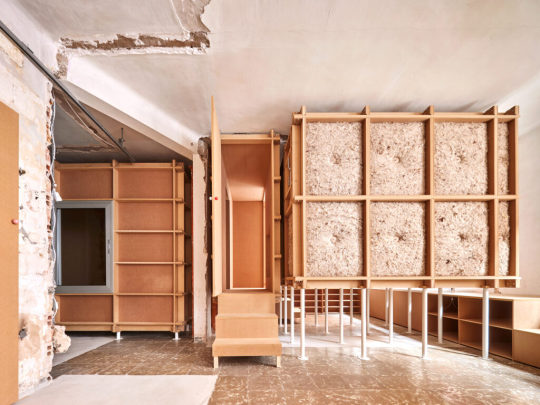
TAKK / 10K House / 2023 / Image © José Hevia
#takk#architecture#interior#mdf#wood#low cost#recycle#reuse#program#self building#domesticity#ruin#materiality#microclimate#superfurniture
1 note
·
View note
Text
Microclimate
Microclimate [MY-kro-kli-mət] Part of speech: noun Origin: International Scientific Vocabulary, 1918 1. The climate of a very small or restricted area, especially when this differs from the climate of the surrounding area. Examples of microclimate in a sentence “My neighborhood’s microclimate gets plenty of sun in the afternoon, even when it’s raining just a few streets over.” “The waterfall…
youtube
View On WordPress
#daily#definition#dictionary#educational#Knowledge#learning#lesson#Microclimate#schoolhouse#vocabulary#word#Youtube
0 notes
Photo
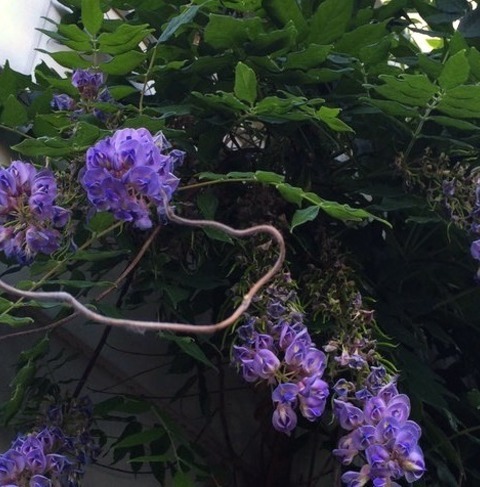
Traditional Landscape Denver
Inspiration for a large traditional drought-tolerant and partial sun backyard garden path.
0 notes
Text

#micro
#microclimate#aesthetic#holy spirit#holy bible#holy shit#holy smoke#cafe#floral#ceramics#wait and see#good omemes#art
0 notes
Text

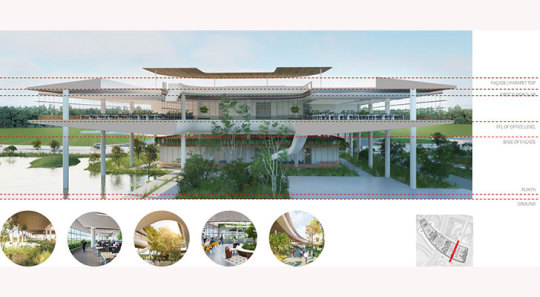
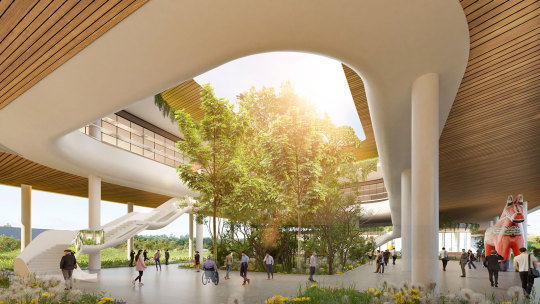


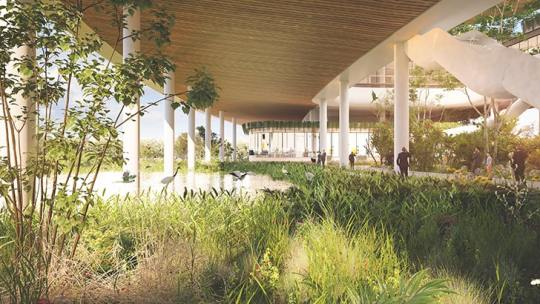


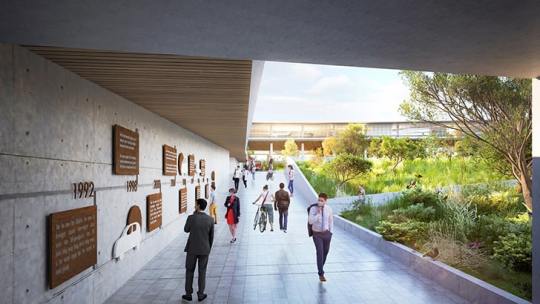
The Chip by Edifice Consultants Pvt. Ltd.
Edifice Consultants Pvt. Ltd. designs this workplace largely as a journey through nature. At every point in the journey, nature defines the true value of this architecture, making a statement because of the landscape and not despite it! https://bit.ly/ECPL-IAnD
#landscapearchitecture#workplacearchitecture#officedesign#natureandarchitecture#buildingdesign#climaticarchitecture#wetlandecosystem#courtyardtypology#microclimate#indiaartndesign
0 notes
Photo


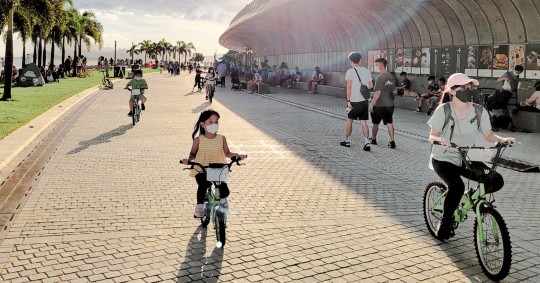

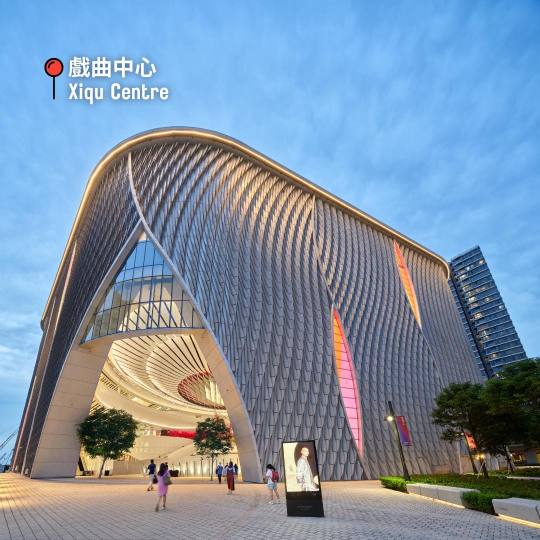





The 10 Adversities Of West Kowloon Cultural District In The Past & Its 3 Future Shots At Hong Kong’s Cultural Ambitions
National government wants Hong Kong to be a cultural exchange centre.
Path to success is full of frustrations and setbacks. Failure does not matter but regret does.
Let us not judge West Kowloon Cultural District (WKCD西九文化區) by how many times it fell down in the past, but by how many times it will be able to get up in future.
The WKCD has gone through a number of well-publicized hard times for nearly 20 years leading up to the present partial opening of WKCD. It is evidently in safe hands with the new CEO Betty Fung.
In 1998, the Chief Executive of Hong Kong Tung Chee-hwa announced the bold establishment of the West Kowloon Cultural District, the biggest in the world, consisting of 17 museums, concert halls and theatres, endeavouring to develop Hong Kong as the best cultural hub in Asia. The District could attract many tourists and strengthen Hong Kong’s cultural power.
Some visions and plans were later traumatized because such an ambition looked like a blessing wrapped in the clothing of a chain of curses:
(1) In 2001, government employed the world-class architect Norman Foster to come up with a Grand Canopy concept for the whole district. The canopy could create a ‘microclimate’ in which, by forming convection air currents, hot air would leave and cool air would flow into the area, thus producing a cooling effect. The design faced strong opposition claiming that the concept was unrealistic and expensive. The design was scrapped.
(2) In 2003, government put out to tender a PPP (public-private partnership) in that a single private developer would be invited to finance, build and operate the whole WKCD project. Again, the initiative was perceived as an exploitation of the public resources to dispense favour to just one developer. The proposal was defeated.
(3) In 2008, government set up an independent West Kowloon Cultural District Authority to manage all the affairs of the district. There rapidly ensured a series of hot debates as to what should be built in the district. The variety of demands, ranging from children’s museum, arthouse cinema, Chinese ink works museum to literature museum formed a series of problems which were fundamentally insoluble. Also, the separate bidding of individual infrastructure projects resulted in extra tedious processes, heavy concurrent responsibilities and pressurized co-ordinations.
(4) Government initially approved a HK$21.6 billion budget for WKCD. The construction cost unfortunately kept climbing and the estimated cost after a few years alarmingly went up to HK$47 billion. Politicians rebuked the WKCD Authority for failing to manage construction properly and so allowing it to be a bottomless ‘black hole’. At present, WKCD is still trying very hard to raise capital and hopefully it may not spark another financial tribulation.
(5) In 2012, WKCD agreed to purchase about 47 contemporary art works from a Lucerne-based collector Uli Sigg for HK$177 million in consideration of his donating more than 1,000 other works to the M+ Museum of WKCD. This deal induced the great attacks from the public that there might have been some kind of ‘irregular transfer of benefits’ behind the arrangements. In 2014, M+ bought a ‘sushi bar’ for around HK$15 million with public funds which was an old renovation of a closed-down restaurant in Tokyo. Artists in Hong Kong disagreed that the item was worth the high price of collecting and bucked the wisdom of such an acquisition.
(6) In 2017, one party-goer died and 3 were in a critical condition when attending an electronic rave concert at WKCD. They were sent to hospital and the police seized some amount of drugs from the site. There was a public accusation that WKCD should not allow such kinds of vulgar concerts to be held and these outdoor music festivals were about dirty language, anti-government sentiment and drugs.
(7) In 2018, Hsin Chong Construction, the main contractor of M+, faced severe money troubles and was unable to pay its workers. Its significant delays caused WKCD to incur substantial losses. In March, the Authority issued a press statement to formally fire Hsin Chong owing to its alleged insolvency. Hsin Chong rebutted it as an incorrect accusation. The parties finally referred the disputes to litigation in the courts. There was, again, bitter political mudslinging in the battle against the reputation of WKCD.
(8) In 2020, Duncan Pescod, chief executive of WKCD, tendered his resignation before his contract ended. He hinted that the government would like him to leave. The authority’s first head, Graham Sheffield, quit just 5 months into the job in 2011, citing health reasons, while the second chief, Michael Lynch, left in 2015 after working for a relatively short period of years. At the same time, the arts and culture sector had long been pointing its finger at these foreign CEOs, saying that they did not know well enough the local needs and circumstances. These awkward high-level personnel changes made a bad situation worse for the cultural district.
(9) The Hong Kong Palace Museum, a local version of the national museum in Beijing, opened its doors in July 2022 showcasing Chinese precious exhibits and relics. The Palace Museum’s launch came a few months after the opening of M+ Museum, the contemporary arts centre in WKCD. ‘When ill luck begins, it does not come in sprinkles, but in showers.’ People denounced the absence of public consultation for the idea of building a Palace Museum in 2016. Some interpreted it as a wilful ‘cultural re-education’. I disagree and think the present Palace Museum is impressive and meaningful. M+ is however still being under constant bombardment by the unfriendly forces: that the project was too expensive, the collections are of a bad taste or anti-national and there are insufficient local art works…
(10) In 2021, WKCD tried to market its commercial site Artist Square Towers amid Hong Kong’s property market downturn. The tender was cancelled without a successful bid. In 2022, developers were re-invited to submit bids for the commercial project worth as much as HK$10.7 billion upon completion. Pray that such money will help WKCD.
Bad decisions and bad luck are a good pair which, through thick and thin, have sabotaged the painful past of West Kowloon Cultural District for more than 20 years. There are present signs of good pathways on the road to recovery. We can see at every weekend, thousands of citizens pour themselves into the beautiful District to support and peek into the cultural and architectural pride of Hong Kong. The future belongs to those who believe in the ‘can do’ spirit of our city.
From now on, apart from not making mistakes which may stunt WKCD’s growth, there will be 3 critical shots to make. Such 3 shots should take bona fide precedence over any direction of the cultural hub: to produce or encourage the production of top-grade cultural activity and program. By subsidizing these activities and programs, through overseas collaborating effort or otherwise, we can incubate the internationally outstanding status of West Kowloon and also artists in Hong Kong. Secondly, through bestowing charming characteristics on such art progeny, WKCD can help maximize the spread of the cultural preponderant influence of Hong Kong in the world as a result of art market expansion. The third heads-up is that the works must also be ‘Hong Kong-relevant’, speaking volumes about our cultural beliefs, preferences and tastes to other countries.
The best index to Hong Kong’s success should be how we will show the world that the striking ‘East-meets-West’ character of Hong Kong shall remain. Let us pray for a little hope that through West Kowloon, our city will excel culturally one day!
Maurice Lee
Chinese Version 中文版: https://www.patreon.com/posts/xi-jiu-wen-hua-78115125?utm_medium=clipboard_copy&utm_source=copyLink&utm_campaign=postshare_creator&utm_content=join_link
West Kowloon Cultural District Introduction https://youtu.be/7gR7hEr4_UM Acknowledgement – West Kowloon Cultural District
Hong Kong Palace Museum Introduction https://youtu.be/QLtaJLfy-O8 Acknowledgement-RTHK
Tea House Theatre Experience at the Xiqu Centre https://youtu.be/FqA4Iu-7aQI Acknowledgement – West Kowloon Cultural District
#Tung Chee-hwa#Betty Fung#Norman Foster#Uli Sigg#Duncan Pescod#Graham Sheffield#Michael Lynch#Microclimate#Chinese Ink#East-meets-West#M+ Museum#Hong Kong Palace Museum#Artist Square Towers
0 notes
Text
youtube
Every garden has a challenging position, but luckily nature has filled every niche, from riversides to mountain tops, to exposed coastal dunes - there is a plant adapted to almost any position. Millie explains how to match the microclimates in your garden to those in nature, to help you choose the perfect plants. Subscribe 🔔 http://ab.co/GA-subscribe
HOT-HOT-HOT:
Hot sun is something we often celebrate in the garden; its energy literally fuels plant growth through the process of photosynthesis. But in many built environments our buildings and paving can amplify that energy and heat, to extremes. And while some species are happy in full sun in an open garden position, in a paved courtyard or ceramic pot, they will burn to a crisp.
Looking for species that naturally occur in exposed and hot places can help you find plants that will succeed. Millie spotted the rock isotome booming in rock crevices on a local mountain top, and knew it was a good choice for the northern side of the house. It flowers for about 6 months and needs absolutely nothing from the gardener. In fact, the sap is caustic, so it is best to avoid any contact. That is one extreme plant! Eremophilas are another fantastic group to explore. There are around 300 species in Australia and their name loosely translates to desert lover. Many of the most beautiful everlasting daisies, from WA and the east coast, will also only thrive in an open, sunny and hot position.
FREEZING COLD:
Freezing cold can be devastating to many plants. Millie’s own garden is in the Victorian Central Uplands, where heavy frosts are common, so she has been trialling species from other areas with high altitude.
BONE DRY:
While ultra-dry conditions occur in geographically arid regions, they can also occur in suburban gardens. Areas that are overshadowed by the eaves of a house or a fence are a perfect example, the rain can almost never reach! The genus Phebalium is one worth exploring, with handsome foliage and a huge range of forms.
No matter the plant you choose for extremely dry conditions, you need to get them off to a strong start. Prepare the soil to hold a little more moisture, and water consistently until the plant has established.
WET-WET-WET:
While most plants need some water, too much can cause poor growth or even death. As the air pockets in the soil fill with water, the roots system can drown. Of course, there is a huge range of species for water gardens, but what about those areas that are just poorly drained, or seasonally wet. These can be really challenging spots to garden. One beautiful group of species to look to are the Leptospermum, as many occur on river edges or even permanently growing in water. There are even protaceous species that thrive in seasonally wet spots, like the swamp banksia and river Lomatia.
WINDY:
Wind can cause havoc with different species in different ways, desiccating and drying some out, physically damaging sensitive foliage but also making it hard for roots to establish.
Of course, coastal species are commonly adapted to wind, with robust foliage and resilience all round. The coastal Banksia is also one of the toughest and most adaptable species, occurring from coastal central Queensland, all the way to Vic. They can be variable form seed, between about 4-15 m, and there are a huge range of cultivars.
Featured Plants:
ROCK ISOTOME - Isotoma axillaris ‘Glowing Purple’
EMU BUSH - Eremophila glabra ‘Kalbarri Carpet’
EVERLASTING DAISY - Xerochrysum ‘Pilbara Gold Medal’
MOUNTAIN CORREA - Correa lawrenceana ‘Deep Pink’
SNOWY PIMELEA - Pimelea nivea
FOREST PHEBALIUM - Phebalium squamulosum ‘Starry Clusters’
- Phebalium squamulosum subsp. argenteum ‘Low Grey’
WEEPING TEA TREE - Leptospermum brachyandrum
SWAMP BANKSIA - Banksia robur
RIVER LOMATIA - Lomatia myricoides
COASTAL BANKSIA - Banksia integrifolia
DWARF COASTAL BANKSIA - Banksia integrifolia cv.
ALBANY WOOLLY BUSH - Adenanthos sericeus ‘Silver Streak’
#gardening australia#Solarpunk#Australia#native plants#plants#flowers#native flowers#flora#microclimate#WA#Victorian Central Uplands#banksia#Lomatia#Queensland#Youtube
2 notes
·
View notes
Photo

While traveling the Ring Road of Iceland we stopped in by the charming town of Akeuri and visited their world class VB botanical garden #botanicalgardens #iceland #icelandic #nature #naturephotography #microclimate #tranquil #flowers #flowersofinstagram #publicpark #flora #fjord #town #arcticcircle #travelphotography #jimcookphotography https://www.instagram.com/p/ChVBXqKLLEg/?igshid=NGJjMDIxMWI=
#botanicalgardens#iceland#icelandic#nature#naturephotography#microclimate#tranquil#flowers#flowersofinstagram#publicpark#flora#fjord#town#arcticcircle#travelphotography#jimcookphotography
0 notes
Text
Hazy Cloud Cover

STAR WARS EPISODE I: The Phantom Menace 01:20:33
#Star Wars#Episode I#The Phantom Menace#Coruscant#carbon dioxide reactive damper#unidentified starship#artificial reservoir#Coruscant system#troposphere#microclimate#Naboo Royal Starship
1 note
·
View note
Photo

A day in Osaka: Microclimates save me! It must be 40 deg today!!!!
0 notes
Photo

I get the feeling we may get none of this, while everyone else does. #weather #chatham #microclimate (at Chatham, Massachusetts) https://www.instagram.com/p/CfUHdylugLY/?igshid=NGJjMDIxMWI=
0 notes
Text
Guide for the Selection and Use of Plants in the Landscape
Guide for the Selection and Use of Plants in the Landscape
Without a doubt, plants are the foundation of our outdoor environment. The diversity of plant species and the multitude of cultivars, hybrids and varieties make for creative and appealing landscape compositions. There are a number of reasons for choosing plants for the landscape. We may be attracted to their ornamental appeal or call upon them to serve a specific function or purpose in the…

View On WordPress
#fertilization#Guide for the Selection and Use of Plants in the Landscape#irrigation and pest management#microclimate#ornamental appeal#perennial#pruning#shrub#Tree#Windbreaks
0 notes
Text
Summerfest Day 6 - IN BLOOM
The door to the tower room is much too heavy – that’s the next thing Efri needs to try to get them to change. She has to shove her whole weight against it with her shoulder to budge it, which is a dangerous game with her hands full of books and paper and an inkbottle and pen with a chewed nib. She doesn’t drop anything, luckily; but she does bash her ankle on the hefty slab of wood, which is almost as bad.
She doesn’t bother to knock, because why should she – she entered very audibly. Instead she just marches, vaguely irritated, past the entryway – almost slipping on the silky blue rug (honestly, she’ll need to make them remodel the whole place at this rate) – and into the room proper. One of the chests has been moved, she notices at a cursory glance; the Archmage is watching her from the desk, twisted around in his seat, brows knitted. He doesn’t have his hood on, which startles Efri far more than the change in furniture. (She can see his whole face. It’s weird.)
His lips press tightly together inside the little window left by his facial hair. It’s an expression she normally would not be able to see so clearly and does not make it any less weird. But Efri’s not one to be rude – when she remembers to try not to be, at least – so, very politely and with no small effort, she says, “Hi,” and doesn’t mention it.
The Archmage’s lips go even thinner.
“Hello,” he replies slowly. “You didn’t bring your friend.”
Efri shakes her head. Hair tumbles in her face – she cut it just a mite too short when she gave it a trim last week, and now it’s doing all sorts of silly things – and she purses her lips funny-like to blow it away. “Sissel’s talking to one of the teachers,” she informs him. She frowns. “And Kazari’s resting, but you didn’t ask, because you still haven’t met them, because you still haven’t fixed the stairwells.”
(The stairs are too narrow, the turns too tight, and Kazari – taller than Efri standing on four legs and at least twice as long – doesn’t even want to try to climb them for fear of getting stuck.)
(She didn’t want to come up today, anyway; something about being bothersome. But she has wanted to come up before – like two weeks ago, when they had to explain the Saarthal thing, and a week and a half ago, when they had to ask why no-one was telling them why the College doesn’t have books about Saarthal anymore – and besides, it’s the principle of the thing.)
One of the magic lights fizzes and bobs. The Archmage’s eyes flicker away. “We’re not widening the stairwells,” he says, voice dry, hands beginning to fuss with something on the desk.
“Yes,” Efri tells him, “you are. It’s not fair otherwise.”
He tips his head so she can’t see his face. (It might actually be a more comfortable arrangement for both of them.) “These are my rooms. I’m the only one who needs to be able to access them.” A page slips from his hands onto the floor and he mutters something. As he’s bending over in his chair to pick it up he adds, “If you didn’t need anything…”
Efri shifts on her feet, balancing her books as carefully as she can. She says, “I wanted to look at the garden.”
Silently, the Archmage picks up his paper and smooths it with careful attention over the surface of his desk. He doesn’t sigh exasperatedly, but he certainly has the posture of someone who would like to.
“I’ll be quiet,” Efri says. (Because she’s polite. And because she really wants to look at the garden.)
The Archmage, who doesn’t seem to be much concerned with politeness, flaps a hand. Efri takes it as approval, and goes to set herself on the low stone steps by the bed of soil.
(To be fair, he doesn’t have to be polite. He’s the boss. If Efri was in charge she probably wouldn’t be as polite. She still would be when she liked the people, or when she wanted to – but she’d be much less polite to him, because he’s ridiculous.)
The garden is as bright and wonderful as it always is, a strange little pocket of life bowered by cold stone. It looks a bit like a moon set into the slate-grey sky of the flagstones. (A rainbow moon. Incandescent moon. Are there plants on the moons? Almost certainly not, but it would be very cool if so.) Efri sits carefully at the edge, her books and things arrayed around her, pen set over the paper of her word-book and inkbottle uncorked and ready. (She’ll have to make sure not to spill it.)
She takes a good minute, first, just to stare; the Archmage lapses into quiet scribbling, with only the faint scrape of the nib or rustle of the page to remind her that he’s there, while she eyes the odd pointy-tipped flowers, the sprawl of spiky roots, the tasselled mushrooms. She wants to touch it all really badly but the Archmage told her that some of it is poisonous and she doesn’t yet know well enough to know which ones.
But that’s what she’s here to learn, isn’t it? She picks up the heavy book she’d wheedled out of the Arcaeneum. It’s nice, bound in smooth leather, the pages thick and old-smelling. And it’s illustrated. She flips through, the dense words interspersed with printed pictures of plants she doesn’t recognise any better than the ones in the garden. Lumpy fungus, prickly fruits, tangled vines. Finally, there it is – one of the garden plants, the straggly little bush with its toothy yellow flowers, printed in plain ink on the page. Efri checks the picture against the real thing several times, just to make sure they match.
Satisfied on that front, she sets the book down, holding it open to the right page with the heel of one hand, and begins the lengthy process of sounding out the name. “D – R – A –”
It’s not one of the quicker words she’s worked out.
It’s also a bit frustrating. Normally Sissel helps her with these things – she didn’t anticipate it being so much more difficult on her own. Much harder to focus. But she sticks with it, manages the first word (it’s dragons – what dragons have to do with anything, she has no idea) and begins to tackle the second with a determination that disregards the increased sighing and rustling of paper from the desk a ways behind her.
Somewhere in the middle of her heroic effort to parse vowel forms and plosive consonants, the Archmage says, “I can tell you what it is.”
“Shh.” Efri flings up a hand, twisting around in her stone-step seat to glare at him. “I’m learning.”
He is not appropriately impressed by her academic commitment, but at least he shuts up. She turns back around and squints at the word.
After a moment, she adds, “Besides, I already know what it says.” She stabs at it with her finger for emphasis, reaching for a slip of the spare paper she brought to mark the page. “It’s ton-g-you.”
(It might not be, actually. She hasn’t accounted for the E at the end. But those aren’t always there to make sound, Sissel told her – although now that she thinks it might make more sense. It could be said like gooey, which she knows is a word.)
“It’s dragon’s tongue,” the Archmage says, and she hears the legs of his chair scrape against the stone floor.
Efri peers at the printed letters. “Oh.” It’s a stupid way to spell the word, but a lot of words are spelled stupid. She tucks her slip of paper in anyway; as she reaches for her word-book, a hand taps her on the shoulder.
She looks up. The Archmage looks down, eyes red as the snowberries in the garden (she knows those ones), a hand held out, palm up, waiting. When she doesn’t move he gestures, impatient, to the book in her hand. She passes it up.
It’s a good book. Nice paper. She likes the sound it makes as he flicks through. “Urag gro-Shub let you borrow this?” he asks doubtfully.
Efri leans over the paper of her word-book, dipping her splodgy pen in the inkpot. “I wheedled it out of him,” she says, voice bright, and marks down a careful D. “I have to bring it right back, though. And I can’t take it outside.”
“Hm,” the Archmage says. He turns another page.
Ink drips from the pen nib to spot the page. Efri swears under her breath and blots it with her thumb. (It doesn’t help. Now her finger is just black.) Not looking up from her work, she asks, “What’s it say about the dragon flower?” She hopes it’s interesting – its name was far too difficult to decipher for a boring plant.
“Hm,” the Archmage says again, and flips back. Efri manages an impressively neat G. “It’s native to Black Marsh –”
“Ooh. I’ve never been there.” She’s barely even heard of it – knows it’s down south, and warm, and wet, and that’s about it.
The Archmage pauses, continues, “– but it also grows in, among other places, the volcanic tundra of Eastmarch’s Aalto.” Another pause. “It looks like that’s the only place it grows in Skyrim at all. Interesting.”
“Maybe it’s because they’re both wet,” Efri suggests. Swamps and springs are close enough, probably. Her pen goes a bit awry on the T, and she frowns at it. “I mean, so I hear. I’ve never been to Eastmarch either.”
The Archmage hums. “Neither have I,” he says passively. When Efri looks up, she sees him fixed on the page, engrossed, his eyes leaping over the text like jumping fish.
Brow wrinkled, she asks, “Really?” Eastmarch is only a hold over, and he’s a wizard. He’s nominally in charge of the whole College. “I would have thought you would’ve been all over.”
The Archmage glances down at her, head tilting. “Why?” he asks.
Good point. Efri shrugs. “I don’t know. I just feel like wizards go places. Make expeditions. They’ve at least been to the next hold.” All her wizard friends have gone far and wide. It’s what she’d do. It’s what she has done, and plans to continue to do.
Though she supposes it makes sense that the Archmage wouldn’t have gone many places. He barely leaves his tower, let alone Winterhold.
He’s still looking at her. (He does that sometimes – normally he doesn’t even meet her eye, staring at his desk or his book or the walls or his hands, and then every now and again he just looks for ages at a time. It’s weird. She can never tell what he’s thinking.) “I’m not overfond of travel,” he tells her. The skin under his eyes, in the weird look of the lighting from underneath, looks like it’s smudged hollow with ink.
Efri shrugs. She looks back at her page, marks down the best O she can. (The circle turns all wobbly by accident – but oh well, she did her best.) “How do you think they had to change the flowers so they could grow here?” she asks.
(He told her all about it, last time – in so many too-long words she’s mostly forgotten it. But she remembers the gist; the plants that grow in the Archmage’s garden are the descendants of plants collected by Archmages long before, precious few of which naturally grow in weather like Winterhold’s. So the wizards of yore, with some esoteric botanical magic, had altered each plant’s characteristics so it could survive in the relatively controlled – but still chilly – environment of the Archmage’s tower.)
(He’d talked about it more, something about microclimates and innovation and it’s fascinating, really, but by that point she’d just been looking at the shrubs. He stopped talking in the middle of a sentence and didn’t speak for another ten minutes.)
The shadow the Archmage casts over the garden is long and spindly as a wintertime tree. He replies, “I don’t know.”
Efri draws an N, a G, a U.
“I know what had to be done to that one,” he says. Efri looks up and follows his pointing finger.
She squints, asks, “The spiky one?”
“No, underneath. The little mushrooms.”
Efri outlines an E and sets her word-book aside. The mushrooms he points to are flat and pale, tucked under the leaves of a bigger shrub. “What had to be done to them?”
The Archmage wears silver in his beard, she’s just noticing. It flashes when he moves. “Ordinarily, they grow in caves –”
“I met my friend in a cave,” Efri tells him brightly.
He blinks. “Not this sort, I’m assuming,” he says. “They only grow deep underground, and often out of decaying matter.” There’s a pause; then, “Dead things,” he adds, for clarification.
Efri peers at them. “So they had to make them able to grow in the light, out of dirt.” It’s interesting. She’s interested. But the closer she looks –
It just looks familiar, is all. (Old dust and corroded metal and blue, blue, blue.)
The mushrooms grow very low to the ground, broad and wrinkled and papery. She thinks of touching one, to check the texture, but the idea makes her fingers flex, hands gripping hard at her scrunched-up skirt.
“Precisely,” the Archmage says.
Efri clasps her fingers together and jams her hands between her chin and her chest. With some difficulty – it’s hard to talk when she’s using her jaw to pin something – she says, “I think I’ve seen them.”
The Archmage’s feet shift beside her. “They grow very deep underground. I can’t imagine –”
“On the dead man.” Efri’s face is getting all scrunched up. “In Saarthal.”
She doesn’t think she likes the dead-man-mushrooms. She’ll look at something else, next.
The Archmage says, “Ah.”
She scrunches up her face harder, looking over all the bright colours of all the other things in the garden. There is a moment’s silence.
When the Archmage speaks again, his voice is careful. “I doubt it,” he says. “The fungus derives some of its names from its resemblance to withered flesh.”
“Oh.” That actually is very interesting. Efri wriggles her fingers. Maybe it’s like a sort of camouflage – though why a mushroom would need camouflage she has no idea.
And when she thinks about it, her dead man would have been embalmed, so there wouldn’t have been much decay for mushrooms to grow from anyway. She squints at them, the little cluster of shrivelled-looking things. Still doesn’t really want to touch them, but her stomach isn’t lurching like it did when first she made the connection, so it’s fine.
She hears the Archmage’s coat rustling. He says, “Efri?”
Efri glances up at him out of the corners of her eyes. “Have you ever seen a dead man?”
The Archmage’s face creases; he sighs, a quiet exhale. He tilts his head away again so his face is in shadow and holds out her leather-bound book, his body already angling back towards his desk.
Efri looks at it. She says, “You can tell me the other ones, if you want.” He clearly knows his garden well.
She thinks he frowns, though he’s still at that odd angle so it’s hard to see. “I’m rather busy at the moment.”
The magelights flash. Efri knows she frowns, then. “No, you’re not,” she points out, because he isn’t. Mirabelle does everything. The Archmage sits around being important.
He twists his head to look at her again, his face all lordly and severe. He does that sometimes, looks down his nose all haughty. Efri’s not sure if he does it on purpose or not, but just to be safe, she tips her head way back so she can look down her own nose back at him. Beside them, the garden shimmers, a rainbow bouquet of plants and textures and smells, a round motley moon set into the cold flagstones of the floor.
The Archmage sighs again (at some point Efri should start counting, make a game of beating the record) and folds his hands, with their heavy book, behind his back. Efri’s eyes crinkle, victorious. “If you look there,” he says, “at the base of the tree trunk, you can see the grapevines…”
#I love them so much. this is their entire dynamic#efri barges in interrupts all his work (read: moping) says something unintentionally wildly upsetting (because I think it's funny)#tries to goad him into botany infodumping on her#tells him he's a weird loser (he is)#etc#I haven't gotten to The Part of the college of winterhold questline in my reimagining and I'm ALREADY fucked up about it#honourable mention for this piece goes to wispstalk's Magically Augmented Microclimates in the arcane university.#didn't end up ripping off the phrasing of it wholesale bc I realised that my thing is like. the exact opposite actually.#but it still motivated me to edit this piece!! and I alluded to it!!!!!#anyway#tesfest23#oc tag#efri#savos aren#college of winterhold#the elder scrolls#tesblr#skyrim#tes#my writing#fay writes
20 notes
·
View notes